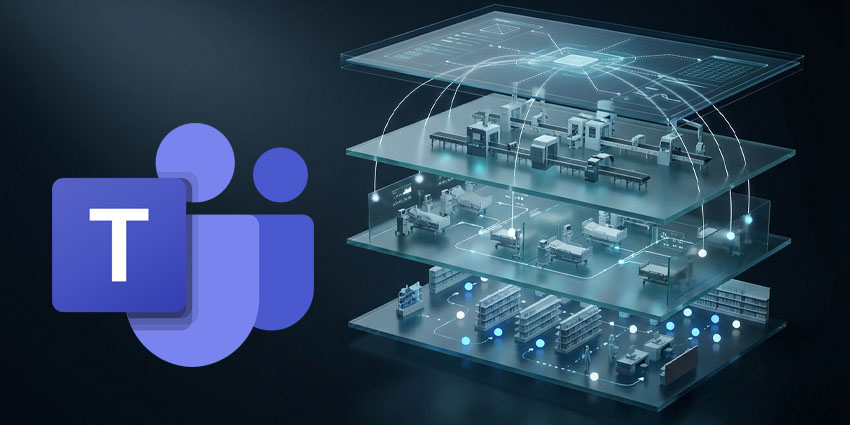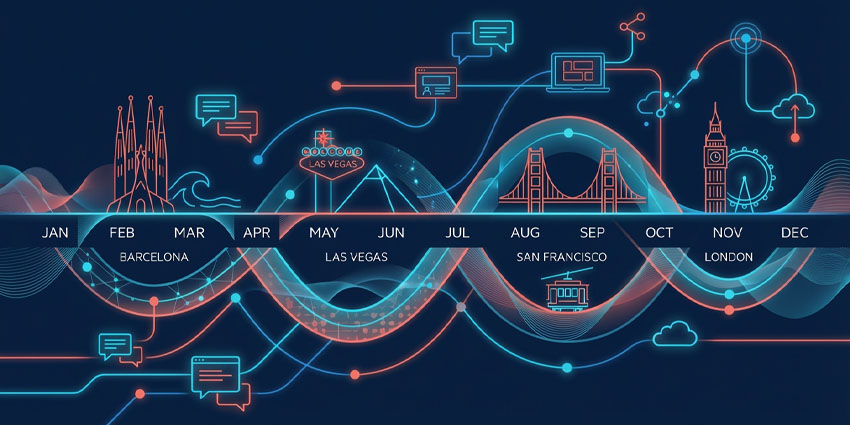If you’re wondering about the best way to do telephony in Teams, DRaaS (Direct Routing as a Service) is an acronym you should know about. The lack of native voice capability has long been a knock against Teams and its Microsoft predecessors, and we’ve moved past the point where all you needed was to integrate with this with your PBX vendor.
With voice now being a data application, there are many ways to have a real-time conversation, but telephony remains core, both for 1:1 calling and team-based communication. Millennials may not think to pick up their desk phone, but IP phone shipments are booming, and fixed line telephony is alive and well in the workplace.
To support this, the Microsoft Calling Plan has been the leading solution for doing telephony in Teams. This capability helps make Teams a more complete collaboration solution, but it has limitations, and is not the only option. DRaaS is an awkward-sounding acronym, but it accurately describes an alternative that many businesses will find attractive, as well as being channel-friendly.
Direct Routing Compared to Calling Plans for Teams
Direct Routing as a Service actually has two components that can make it the right choice for Teams. First is how direct routing is fundamentally different from a calling plan, and second is the XaaS deployment model. With direct routing, the business has more control, and that starts with BYOC – bring your own carrier. Instead of having Microsoft manage telephony end-to-end for Teams, the business can use their carrier of choice. Similarly, for businesses that want to continue using their SBCs – Session Border Controllers – they can easily integrate telephony into Teams without having to build direct routing in-house.
In short, Calling Plans for Teams will appeal to businesses that want Microsoft to fully manage the telephony piece, including billing and technical support. This brings convenience, but other elements must be considered when comparing against DRaaS. Cost is a good starting point, as the flat rate pricing for domestic and international call looks simple but can get expensive when exceeding the minutes caps, not to mention limited coverage for global calling – mainly just US, Canada and EU – along with Japan and Australia.
Then consider billing for global operations, where each regional office will get their own itemised bill. That’s a lot of granular detail to manage, and in this day and age of flat rate pricing, the BYOC model sounds more appealing. Furthermore, while Microsoft can provide reliable service for telephony, do you really want to deal with them for tech support here?
Conversely, direct routing provides global coverage that goes well beyond what Calling Plans includes, and with work from home becoming the norm, this will be appealing for enterprises with a widely-dispersed workforce. The DRaaS pricing model is also more flexible, supporting both flat rate and metered plans, so it’s easier to optimise your telephony spend.
SIPPIO and AudioCodes – a Different Approach
DRaaS has many other attractive qualities, and to further illustrate, I want to touch on a recent announcement from SIPPIO that ties these pieces together nicely. The company has taken their direct routing capabilities to another level by partnering with AudioCodes for an end-to-end DRaaS solution. Aside from being a “better together” go-to-market strategy, it showcases the value of direct routing not just for end customers, but Microsoft as well. I would summarise this in three distinct ways.
1 – Cloud-native
This reflects the XaaS theme where telephony is totally cloud-based, and demand is growing for using this model with telephony. Aside from being easy to scale and optimised for multitenant cloud offerings, SIPPIO is also Azure-native, which addresses issues such as redundancy and compliance for global customers. Combining this with AudioCodes Live Cloud, they can now provide a fully managed SBC capability that seamlessly and securely integrates telephony with Teams across all end user scenarios – desktop, tablet, mobile, etc. As an established SBC partner with Microsoft, adding SIPPIO can quickly elevate Teams to a complete UCaaS platform, making this partnership bigger than just telephony.
2 – Channel-friendly
Offering DRaaS is one thing, but selling it is something else. An integrated solution is much easier to sell than a set of point solutions, especially one that can be deployed in minutes, not days or weeks. In terms of scaling quickly to market, SIPPIO has leveraged the cloud by making DRaaS available through Ingram Micro’s Cloud Marketplace, which reaches over 50,000 resellers in over 60 countries. Now consider AudioCodes, and their long history of selling premises-based SBCs to enterprises. Like SIPPIO, they recognise how the market has changed, shifting to an on-demand, Opex-based selling model. By combining best-of-breed DRaaS with managed SBC, the value proposition is stronger, especially for enterprises looking for a relatively painless path to the cloud. Being an easier solution to sell this way, it helps drive SBC adoption, and with more telephony being tied to Teams, it can also help drive more endpoint sales, especially for IP phones and telephony peripherals such as headsets.
3 – Drives Teams adoption
While it’s easy to view telephony as a low-margin commodity, it has high-value for making Teams stickier. Microsoft is everyone’s target or partner in the collaboration space, and desktop dominance does not ensure UC dominance. Teams can succeed without telephony, but it’s still integral for collaboration, so Microsoft has much to gain here. Telephony may not be interesting to Microsoft as a line of business, but it’s often the starting point for collaboration. Cloud-native providers like RingCentral, 8×8 and Vonage drive much of the hosted VoIP market, and adding UC for their customers is easier than for Microsoft to entice Teams customers to use their Calling Plans. This combined offering from SIPPIO and AudioCodes provides a turnkey solution to compete head-on with competitors who have made inroads selling dial tone and have built on that to sell UCaaS. Not only that, but these providers have their own plans for direct routing, posing an even bigger threat for Microsoft to counter.
Conclusion
Microsoft Teams – along with all the other collaboration platforms – has been booming due to the pandemic, but that should not be cause for complacency. There is no end to the cloud-based offerings going after this space, and Microsoft must keep a sharp focus on what really drives value and adoption. Telephony may be viewed as yesterday’s technology, but it’s as relevant as ever, especially with so many people working remotely. In my view, the more integrated telephony is with Teams, the more competitive it will be in such a crowded market. DRaaS may not be the universal answer, but the end-to-end offering from SIPPIO and AudioCodes is a great example of building on the strengths of cloud to address what the market needs today.







